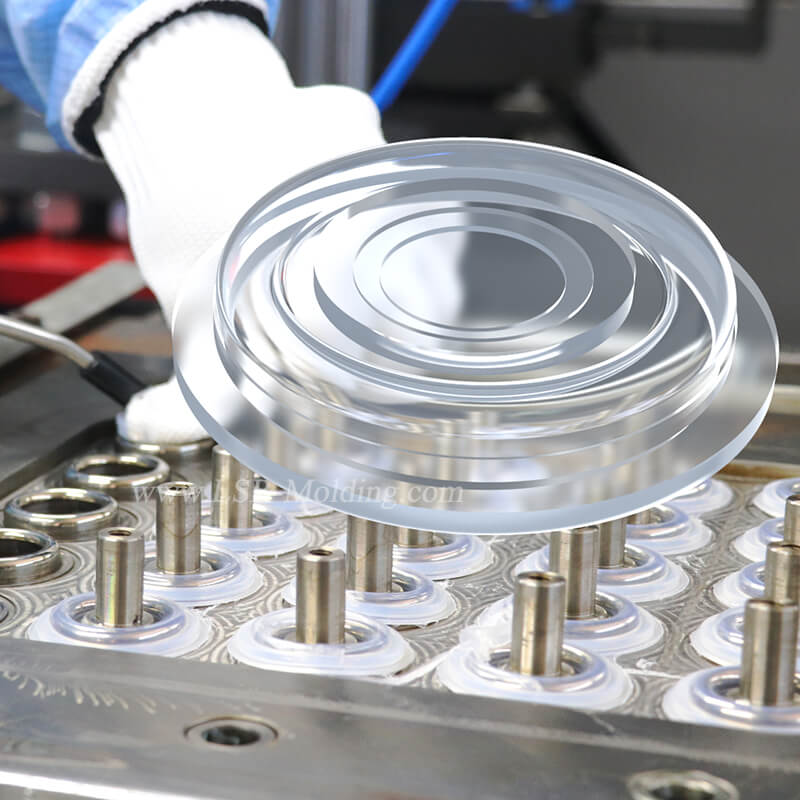Hot Keywords:
- All
- Product Name
- Product Keyword
- Product Model
- Product Summary
- Product Description
- Multi Field Search
Views: 624 Author: Site Editor Publish Time: 2020-04-25 Origin: Site

Air Trap as well as gas trap, a common defect during Liquid Silicone Injection Molding Venting, is the root cause of bubbles, voids and blisters, short shot visible on molded part, which are mainly caused by unreasonable mold venting system and part structure. These problems will affect part quality and increase reject parts due to cosmetic requirement. Therefore, proper LSR Molding venting is the key of solving air trap issuesand defects. We must to make detailed manufacturability and moldability analysis on part design structure, then design reasonable mold injection gate and venting system. Make continuous improvement on mold venting during mold trial& test.
Injection Gate design determines flow direction of liquid silicone rubber material and flow path of air venting.
We will take some more details about air trapping due to part design structure.
1. A part with extremely uneven thickness, big different between thin-walled section and thick-walled section. When the melt flow to thin section, it tends to be fully cured quickly, which make melt flow can’t move on and air is trapped inside the mold cavity. Thus, short shot will occur on finished part.
(Take silicone rubber keypad with key webbing for an example. The key webbing is really thin, only about 0.25-0.4mm. However, the button&keys have much thicker material. A big difference between key webbing and buttons will cause air trap. Therefore, we don’t suggest to choose Liquid Silicone Rubber Injection Molding for keypad with key webbing.)
2. A part with long filling distance: If a part is large and long, the melt flow travel across a long distance and it needs longer time for filling and curing. During long period, gas trapping tends to occur at end of the melt flow. Besides, if there exist corner design with part, the melt flow won’t move on easily, and air& gas fail to exhale from mold by venting.
3. A part with thin and narrow wall (especially inside wall not near trimming edge): If a section of a part is thin and narrow, the melt flow is difficult to keep moving and flow speed is very slow, LSR material will be cured before complete & full filling. Air will be trapped inside cavity and cause bubbles, voids and blisters and short shot. For the inside wall (without any trimming edge), if we don’t increase additional pathways for venting, the air will be trapped inside mold cavity. Product will be unfilled.
For the bubbles and air trapped, we also take some Solutions as following:
1. Melt flow: change the gate location or increase injection gate.
2. Venting System: Increase venting pathways, or change width & depth of flow path
3. Too thin and narrow wall: increase size of wall thickness.
4. Increase vacuum
5. LSR material viscosity
6. Adjustment process parameters: mold temperature, injection pressure, hold pressure and back pressure, clamping force, etc.
Contact Us / Product Inquire / Liquid Injection Molding / LSR Molding / Article Inquire / FAQ / Download / Sign In / Register / Gallery / China Hot Products / Hot Products / Liquid Silicone Rubber Molding / Customized service / Request Quote / LSR Mold Design Guide / Liquid Silicone Rubber / Liquid Silicone Rubber Molding / Food Grade Liquid Silicone Rubber / Medical Grade Liquid Silicone Rubber / LSR Seal / Expo News / Industry News / Liquid Injection Molding - Better Silicone Project News / Silicone Materail Certifications / Silicone Umbrella Valves Drawing